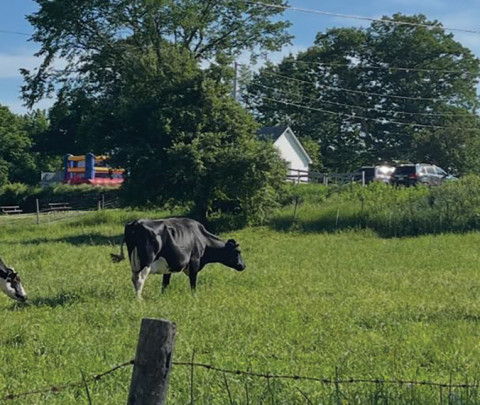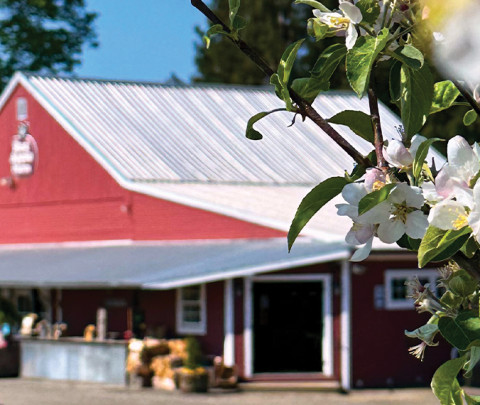Take the Scenic Route to Local History
- Visit North Central
While the homes, business, and residents are gone forever, the lost villages of the Swift and Ware River Valleys live on in spirit.
For three-quarters of a century, these picturesque, once-thriving small towns and hamlets have been largely obscured by the deep waters and diverse natural habitats of the Quabbin Reservoir and Ware River conservation areas.
After searching for adequate water sources for the greater Boston area for nearly 300 years, state planners decided to create the massive Quabbin Reservoir by flooding the Swift River Valley during the 1930s. Four towns – Enfield, Greenwich, Prescott, and Dana – and several other villages were abandoned, forcing 3,000 residents to relocate. During this time, the Ware River was also added to the water supply network, and several additional less-known villages in that watershed, including Coldbrook Springs, White Valley, and Barre Falls, were also abandoned.
Today, these watershed lands form some of Massachusetts’ largest wilderness areas. Quabbin Reservoir is southern New England’s largest lake, and is home to a wide variety of wildlife including moose, breeding bald eagles, and common loons. The Ware River Reservation, Rutland State Park, and Barre Falls Dam protect nearly 25,000 acres and offer a variety of natural habitats and recreational opportunities.
Along the Byway
The nature and history of North Central Massachusetts come together along the Route 122 Scenic Byway, a recently dedicated 40-mile scenic road that stretches from the center of Orange to Paxton. A large portion of the road is designated as the ‘Lost Villages Byway,’ as it passes by many historic sites in the Quabbin Reservoir and Ware River watersheds, both of which were taken by the state during the 1930s to create the public water supply.
The byway is easily accessed at its north end from Route 2 Exits 15 and 16. Visitors can combine it with a drive along the famous Mohawk Trail, a popular foliage-viewing trip.
While the byway is worth a visit in any season, it is especially picturesque in autumn. By mid-September, the red maples in the wetlands are ablaze with vibrant color, while the later species such as oak and beech reach their peak during mid-late October. The abundant wildlife includes common loons, bald eagles, river otters, beavers, waterfowl, and a growing moose population (pay attention when driving, especially early and late in the day).
From its north end in Orange, the byway briefly runs concurrently with Route 202, then winds past a series of wetlands along the northern perimeter of Quabbin Reservoir. At the New Salem-Petersham town line is the entrance to the Federated Women’s Club State Forest, which protects nearly 1,000 acres abutting the reservoir. Its attractions include a campground, wildlife-rich beaver ponds along Fever Brook, and trails to a vista on Soapstone Hill. A short distance west of Petersham center is scenic Harvard Pond; where there are parking areas on the east and west shores and walking trails.
Petersham’s well-preserved common is ringed by several historic buildings, including the abandoned Nichewaug Inn, the Memorial Library, and the country store, which is scheduled to reopen in October 2013. In autumn, colorful sugar maples frame the buildings and bandstand, offering many photo opportunities. A short detour south on Route 32A will bring you to the trailhead for Dana Common, Quabbin Reservoir’s best-known historic site (see sidebar).
East of Petersham center, the byway passes a series of conservation areas in the watershed of the East Branch of the Swift River, Quabbin Reservoir’s largest source. There are many miles of nature trails that lead to rivers and streams, waterfalls, wetlands, and historic sites. An information kiosk is posted at the entrance to the Swift River Reservation, across from Connor’s Pond near the Barre town line.
Take a Break
With several restaurants and stores, Barre is a fine place for a break. A short distance from the common is the Cook’s Canyon Wildlife Sanctuary, where an easy mile-long trail leads to a rocky gorge and old mill pond along Galloway Brook. It’s an ideal walk for families and those looking to quickly stretch their legs. During the holiday season, the town puts up a colorful display on the common.
South of Barre are the sites of the lesser-known ‘lost villages’ of the Ware River Valley. These were also abandoned when the state took watershed land for the water supply system during the 1930s. A brick building (now used as a garage) marks White Valley, a former cotton mill complex that included worker tenements and a store. The footbridge on the south side of the byway is part of a recreational trail that follows an old railroad line along the Ware River.
A short distance to the south is the former site of Coldbrook, a small industrial and resort center that was once home to mills, hotels, and roughly 100 residents. Though the buildings are gone and the sites obscured by forests now, a small stone monument at the junction of Coldbrook Road marks its general location. The dirt roads now offer visitors access to one of the state’s largest conservation areas, a 22,000-acre preserve comprised of the Ware River Reservation, Rutland State Park, and Barre Falls Dam. The latter is part of a popular recreation area that includes walking trails, a boat launch, a disc golf course, and picnic area.
The byway’s southern end is in Paxton, a suburb of Worcester. A must-see here is Moore State Park off of Route 31, where the diverse attractions include colorful rhododendron gardens, a historic sawmill and mill pond, and nature trails through fields and meadows.
— John Burk








